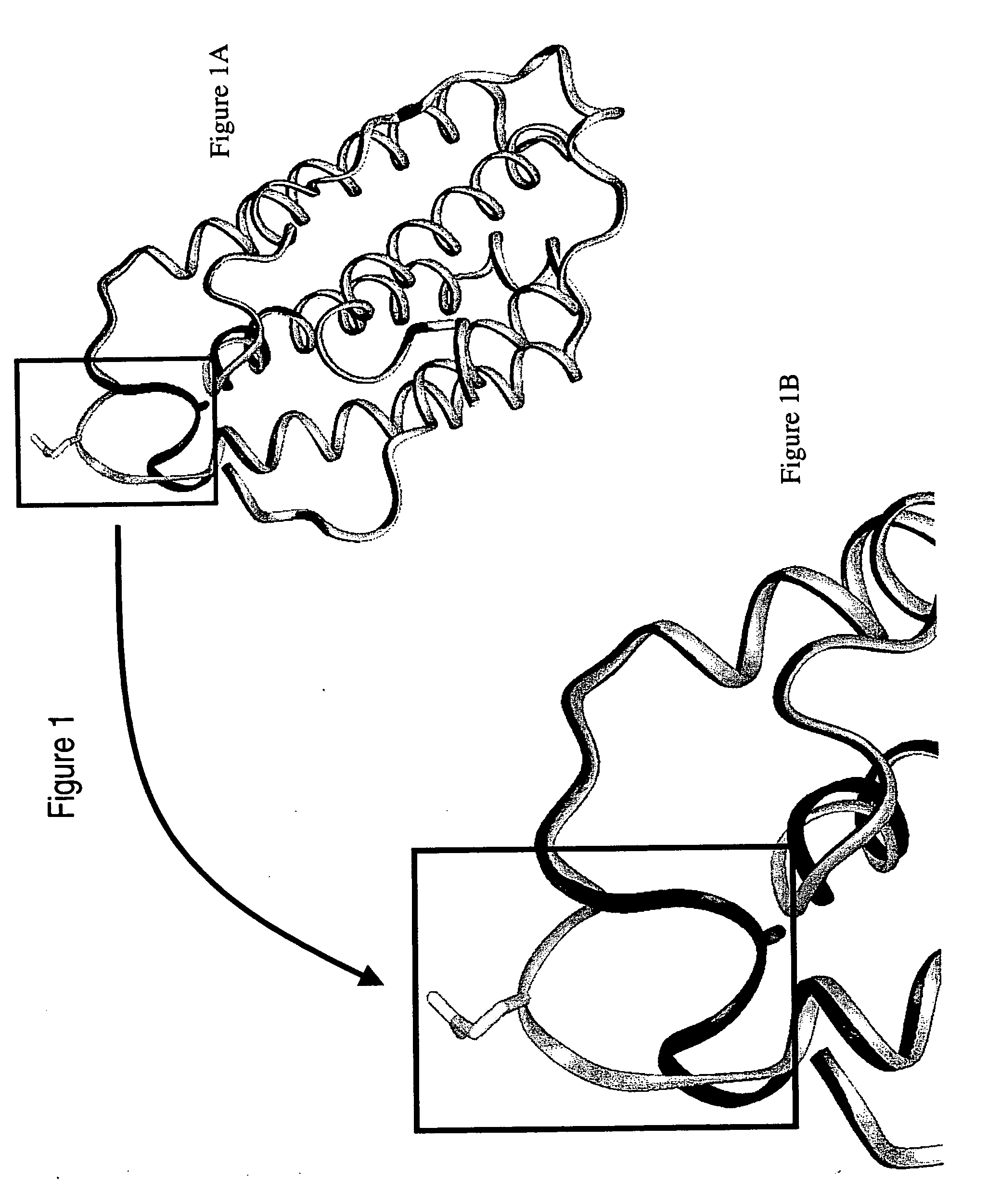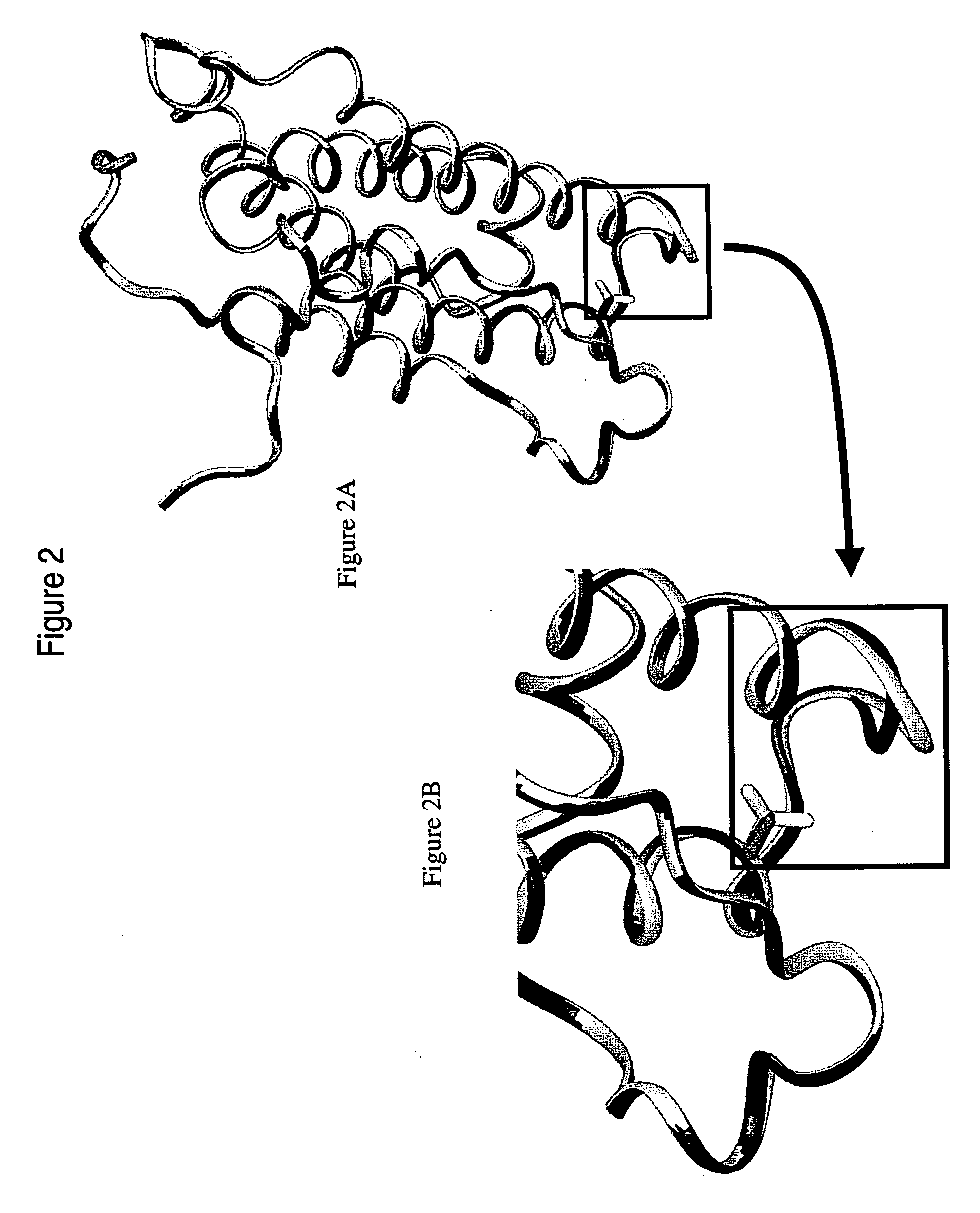Polynucleotides and polypeptides of the IFNalpha-14 gene
a technology of polypeptides and ifnalpha14, which is applied in the field of polypeptides of the ifnalpha14 gene, can solve the problems of decreasing their effectiveness
- Summary
- Abstract
- Description
- Claims
- Application Information
AI Technical Summary
Problems solved by technology
Method used
Image
Examples
example 2
Genotyping of the SNPs g1318a, c1423t, c1456t in a Population of Individuals
[0369] The genotyping of SNPs is based on the principle of the minisequencing wherein the product is detected by a reading of polarized fluorescence. The technique consists of a fluorescent minisequencing (FP-TDI Technology or Fluorescence Polarization Template-direct Dye-terminator Incorporation).
[0370] The minisequencing is performed on a product amplified by PCR from genomic DNA of each individual of the population. This PCR product is chosen in such a manner that it covers the genic region containing the SNP to be genotyped. After elimination of the PCR primers that have not been used and the dNTPs that have not been incorporated, the minisequencing is carried out.
[0371] The minisequencing consists of lengthening an oligonucleotide primer, placed just upstream of the site of the SNP, by using a polymerase enzyme and fluorolabeled dideoxynucleotides. The product resulting from this lengthening process is ...
example 3
Expression of Natural Wild-type IFN.alpha.-14 and Mutated IFN.alpha.-14 Proteins in Yeast
[0429] a) Cloning of the Natural Wild-type IFN.alpha.-14 and Mutated IFN.alpha.-14 in the Eukaryote Expression Vector pPicZ.alpha.-topo
[0430] The nucleotide sequences coding for the mature part of the natural wild-type IFN.alpha.-14, G105E mutated IFN.alpha.-14, or S151F mutated IFN.alpha.-14 are amplified by PCR using as template genornic DNA from an individual who is heterozygote for the SNP.
[0431] The PCR primers permitting such an amplification are:
9 SEQ ID NO. 11: Sense primer: TGTAATCTGTCTCAAACCCACAGC SEQ ID NO. 12: Antisense primer: TCAATCCTTCCTCCTTAATCTTTTTTG
[0432] The PCR products are inserted in the eukaryote expression vector pPicZ.alpha.-TOPO under the control of the hybrid promoter AOX1 inducible by methanol (TOPO.TM.-cloning; Invitrogen Corp.).
[0433] This vector permits the heterologous expression of eukaryote proteins in the yeast Pichia pastoris.
[0434] After checking of the nucle...
example 4
Evaluation of the Capacity of Wild-type and S151F Mutated IFN.alpha.-14 to Activate Signal Transduction
[0448] The interferons are known to act through signaling pathways involving the JAK (Janus Kinase) and the STAT (Signal Transducers and Activators of Transcription) proteins. The binding of interferon to its receptor induces phosphorylation of the JAK proteins which in turn activate by phosphorylation the STAT proteins. Activated STAT proteins translocate to the nucleus where they bind to interferon response elements on gene promoters, which stimulates transcription of the respective genes. To study the signaling pathways initiated by interferon, the reporter gene technique was used. The procedure is described below.
[0449] The use of a human cell line stably transfected with the luciferase reporter gene under the control of an interferon responsive chimeric promoter provides the basis for this in vitro assay. Thus, the luciferase activity detected reflects the ability of the IFNs ...
PUM
| Property | Measurement | Unit |
|---|---|---|
| Fraction | aaaaa | aaaaa |
| Fraction | aaaaa | aaaaa |
| Fraction | aaaaa | aaaaa |
Abstract
Description
Claims
Application Information
 Login to View More
Login to View More - R&D
- Intellectual Property
- Life Sciences
- Materials
- Tech Scout
- Unparalleled Data Quality
- Higher Quality Content
- 60% Fewer Hallucinations
Browse by: Latest US Patents, China's latest patents, Technical Efficacy Thesaurus, Application Domain, Technology Topic, Popular Technical Reports.
© 2025 PatSnap. All rights reserved.Legal|Privacy policy|Modern Slavery Act Transparency Statement|Sitemap|About US| Contact US: help@patsnap.com



